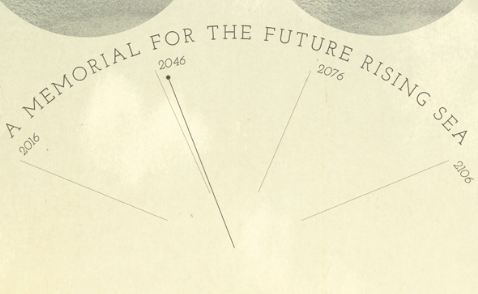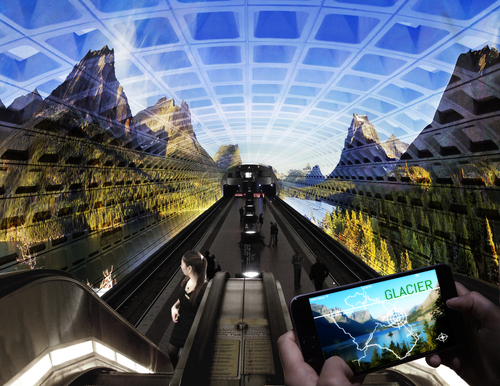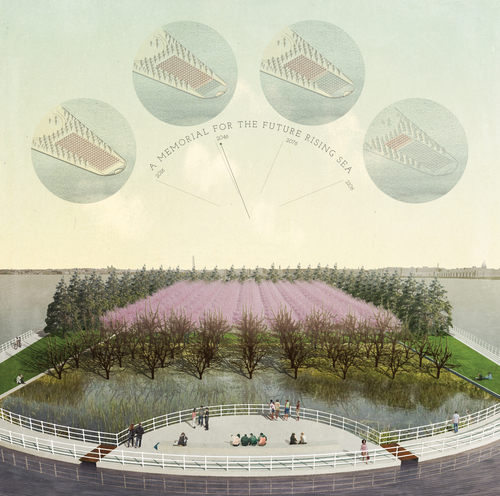Four wild ideas that challenge the concept of memorialization
This article was first published on June 9, 2016 when a federal competition asked people to reimagine how we commemorate important people and events. The four finalists created designs that still challenge our thinking, so we are sharing them again (and you can see who won here).
The jurors for Memorials of the Future picked design teams whose proposals center on topical subjects: national parks, climate change, immigration, and personal subjects. Each of the designs envisions using space outside of the National Mall, and three put digital, interactive technology at the forefront. Two don’t create new public places at all, but rather add to existing ones.
What’s most intriguing about this competition, though, isn’t the question of whose design will be “the best”— at the end of the day, there aren’t plans to actually build any of the memorials. It’s all about the thoughts the designers are provoking.
These designs are saying something new about the concept of memorialization. They all push back on the 20th-century idea that you need a large, permanent commemorative site that tells a single side of an event. Even if nothing as radical as these ideas is realized, this kind of research is a great way of challenging conventional wisdom without much pressure.
Here are the finalists:
American Wild: A Memorial
Washington, DC is a much bigger destination than any of our country’s individual national parks. This project proposes bringing the sights and sounds from these parks into the capital.
The designers are Shelby Doyle, Justine Holzman, Forbes Lipschitz, Halina Steiner, and their ambition is to project a a monument onto Metro stations. Short of that, they’d build small theater pods across the city.
While regular WhichWMATA players will note the image shows the U Street station, the team proposes installing the first display at Anacostia.
Climate Chronograph
Because climate change is a slow and invisible process, its impact is hard to visualize. Erik Jensen and Rebecca Sunter’s entry tries to bring it to light with a grove of cherry trees standing on ground sloping into the river at Hains Point. As sea levels rise, the brackish water would submerge more and more of the trees, killing them.
The project includes a platform to observe the site. The designers hope it becomes a stark visualization for people as they return to DC multiple times over their lives and see fewer living trees.
THE IM(MIGRANT)
This design by Sahar Coston-Hardy, Janelle L. Johnson, Michelle Lin-Luse, and Radhika Mohan takes place along Minnesota Avenue, playing on the theme of moving (along a road, in this case). The team proposes scattering exhibits and audio presentations in existing infrastructure from the 11th Street Bridge Park to Randle Circle.
The exhibits would tell varying stories of migration, inside the United States as well as internationally. Randle Circle, now just a traffic island, would become a plaza for performances, rallies, and day-to-day use.
VOICEOVER
This project by Troy Hillman, Amy Catania Kulper, Anca Trandafirescu, and Yurong Wu records oral histories from local residents. Autonomous parrot-shaped drones would then visit parks, perch, and replay the stories. Hearing about how people relate to a place or event, the creators say, will enrich visitors’ experiences.
I think five years ago, this would have seemed completely absurd. But drones have becoming increasingly autonomous as they become more common.
Plus, in contrast to some of the other smartphone apps where the user is in full control of understanding the content, the experience here would be far more public; users wouldn’t be able to shut off parts of stories, be they uncomfortable or heartwarming.
Each of these are interesting provocations, even if I’m not sure I’d personally want them to come to fruition. But with people still clamoring for space in the city, hopefully some sponsors will pick out one or two ideas to put into their memorials.





